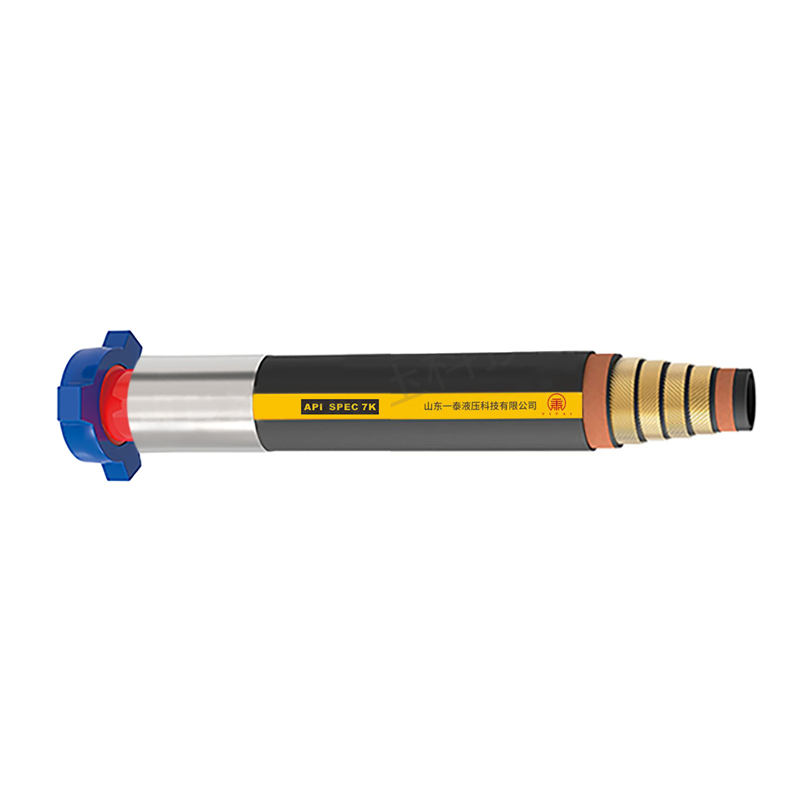What is a High Pressure Cementing Hose
2024-07-01
In the dynamic and challenging environments of the oil and gas industry, the equipment used must meet stringent demands for durability, safety, and performance. One such essential piece of equipment is the High Pressure Cementing Hose. But what exactly is it, and why is it so important?
Understanding High Pressure Cementing Hoses
A High Pressure Cementing Hose is a specially designed industrial hose engineered to handle the high pressures and harsh conditions typically encountered during cementing operations. Cementing is a critical process in the drilling and completion of oil and gas wells, where a cement slurry is pumped into the wellbore to secure the casing and isolate different zones within the well. This process ensures the structural integrity of the well and prevents fluid migration between underground formations.
Key Features and Construction
High Pressure Cementing Hoses are constructed with multiple layers of materials to ensure their durability and reliability under extreme conditions. The primary components of these hoses include:
1. Inner Lining: Made from abrasion-resistant synthetic rubber or other suitable materials, the inner lining is designed to withstand the harsh chemicals and abrasive nature of the cement slurry.
2. Reinforcement Layers: These layers, typically made from high-tensile steel wire or synthetic fibers, provide the hose with the strength to endure high pressure and prevent it from bursting.
3. Outer Cover: The outer cover protects the hose from external damage, such as cuts, abrasions, and weather conditions. It is usually made from synthetic rubber or other resilient materials.
Specifications and Standards
High Pressure Cementing Hoses come in various sizes and pressure ratings to accommodate different operational requirements. The maximum pressure rating of these hoses can range from 5,000 psi to over 15,000 psi, depending on the application. It is crucial to select a hose that meets the specific needs of the operation and complies with industry standards and certifications, such as API (American Petroleum Institute) standards.
Applications
The primary application of High Pressure Cementing Hoses is in cementing operations within the oil and gas industry. However, they are also used in other high-pressure industrial applications, such as:
- Hydraulic fracturing: Transporting fracturing fluids under high pressure to create fractures in underground rock formations.
- Well stimulation: Delivering chemicals and other materials to enhance the production of oil and gas wells.
- Mining: Pumping slurry and other abrasive materials in mining operations.
Maintenance and Safety
Given the critical nature of their application, maintaining High Pressure Cementing Hoses is essential to ensure their longevity and performance. Regular inspections for wear and tear, proper storage when not in use, and adherence to recommended maintenance procedures can significantly extend the hose's lifespan.
Safety is paramount when handling High Pressure Cementing Hoses. Proper training in the handling and operation of these hoses, using the correct connectors and fittings, and adhering to safety protocols can prevent accidents and equipment failure.
Innovations and Future Developments
The field of High Pressure Cementing Hoses is continually evolving, with ongoing research and development focused on improving their performance and durability. Innovations in materials, construction techniques, and design are helping to create hoses that can withstand even higher pressures and more challenging conditions.
Conclusion
High Pressure Cementing Hoses are indispensable tools in the oil and gas industry, providing the necessary strength and reliability to handle the demanding conditions of cementing operations. Understanding their construction, applications, and maintenance requirements is crucial for ensuring safe and efficient operations. As technology advances, these hoses will continue to play a vital role in the ever-evolving landscape of industrial applications.



